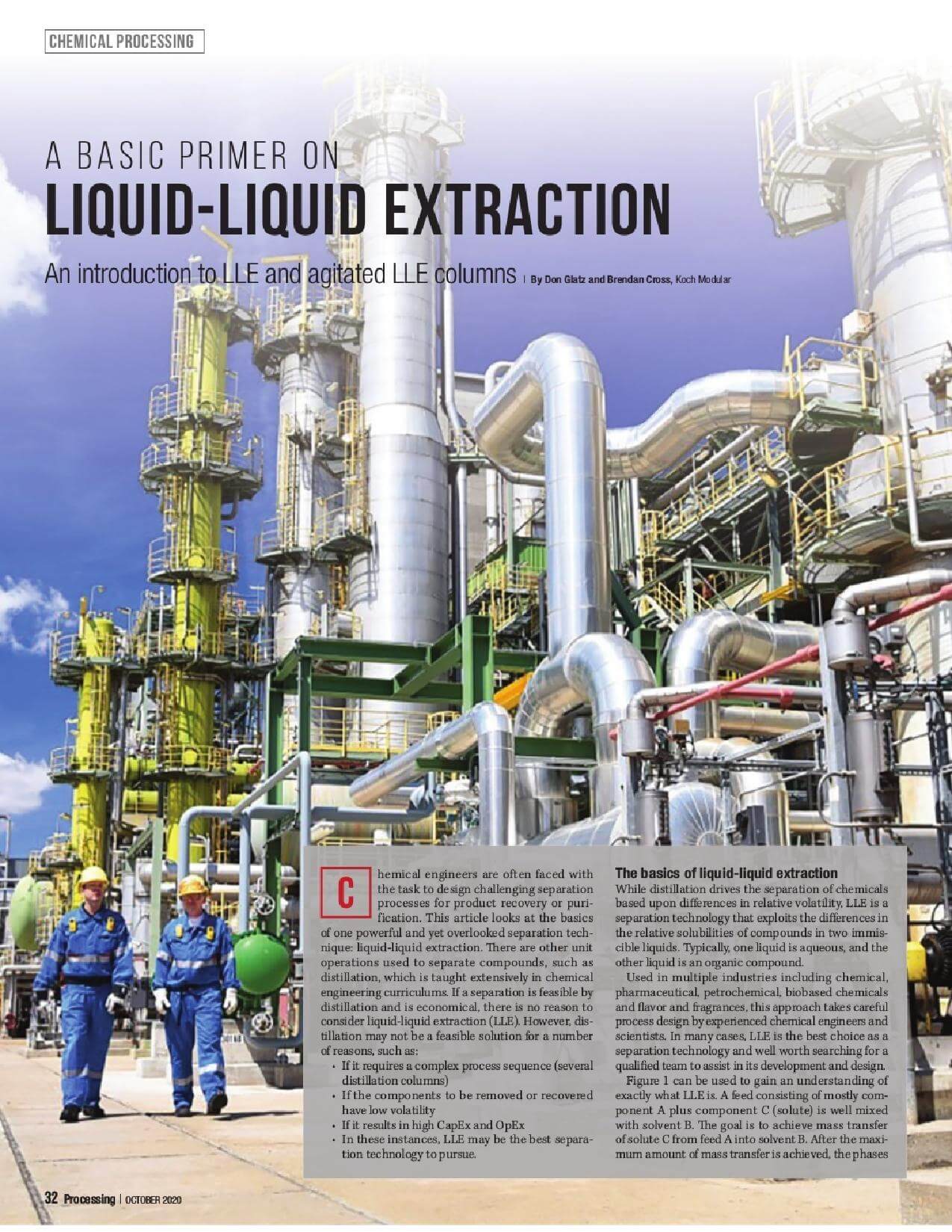A Basic Primer on Liquid-Liquid Extraction
Processing Magazine / October 8, 2020

Today, product purification and recovery remain a priority for chemical engineers. Designing separations processes to accomplish the above is a challenge, especially as streams get more complex in composition. Though often overlooked, liquid-liquid extraction (LLE) is a powerful separation technique for both organic and aqueous liquids. Whereas distillation technology relies on relative volatility differences among chemicals, LLE exploits the differences in relative solubilities of compounds in two immiscible liquids to perform the key separation. Distillation may not be feasible when boiling points are nearly identical or for other reasons, economic and technical. When distillation is not a viable solution, LLE is a great alternative to achieve product purification and recovery.
The article below covers the basics of liquid-liquid extraction and guides readers on how to select the appropriate equipment and solvent for different applications. The article also touches on key concepts of designing liquid-liquid extraction columns and processes, and when to use LLE. For example, chemical engineers can use LLE to remove high boiling components from dilute aqueous streams, such as fermentation broths and wastewater. Other notable topics covered in this article include the selection of dispersed and continuous phases, the Kremser Equation, LLE phenomena, recovering acids from fermentation broths, and more.
For more useful insights into the processes of liquid-liquid extraction, continue reading the October 2020 issue of Processing Magazine now.